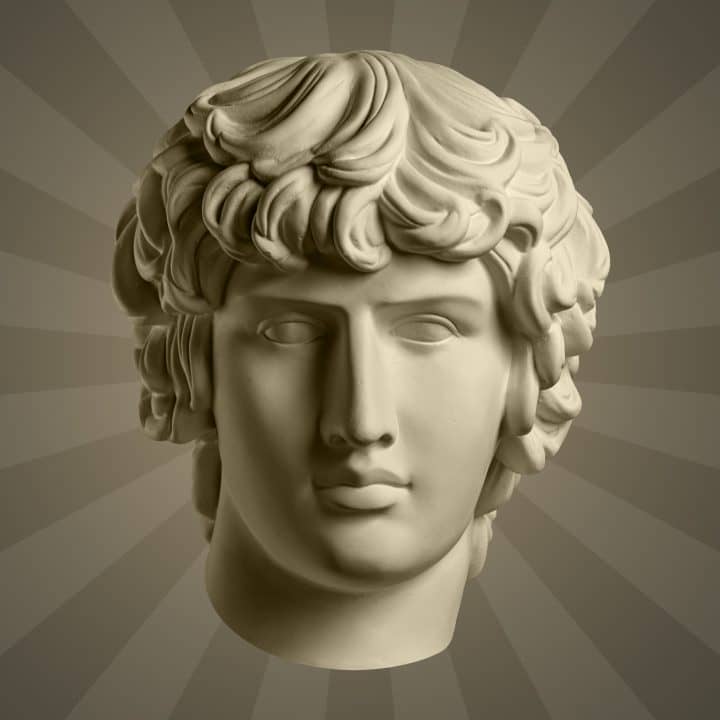 Ancient Greek sculptures got insight from Egyptian and Near Eastern monumental art and ultimately developed into its distinctive style. Sculptors in ancient Greece were deeply concerned with proportion, poise, and an idealized perfection of the human body. Ancient Greek works feature figures with extraordinary physical attributes.
Ancient Greek sculptures got insight from Egyptian and Near Eastern monumental art and ultimately developed into its distinctive style. Sculptors in ancient Greece were deeply concerned with proportion, poise, and an idealized perfection of the human body. Ancient Greek works feature figures with extraordinary physical attributes.
Acrolith Design
An acrolith is a composite sculpture that combines stone with other materials like wood or less durable stone like limestone. The exposed body parts are metal, but the head, hands, and feet are marble. Using different materials for different body parts was common in ancient Greek sculpture. Many famous sculptures are acroliths or pseudo-acroliths.
During the Classical era, sculptures of this style were quite common. It was a common practice in antiquity to cover statues in various sorts of clothing. Only the visible body parts, such as the head, feet, and hands, would need to be portrayed in a beautiful material if these statues were draped. In cases where the figure did not have any clothing, the wooden parts of its body were gilded.
The materials’ cost and availability primarily influenced the production of acrolith statues. Marble was expensive because it had to be imported. Due to its expensive price, marble was only applied to the main or visible parts of a figure that portrayed the flesh.
Sculptors
The Goddess of Morgantina is one statue that has survived mostly unaltered. The statue was returned to Sicily by The Getty, where it is presently kept in the Aidone museum. The head, arms, and feet of the Morgantina goddess statue are sculpted from Parian marble.
On the other hand, the missing veil and headdress are presumed to have been crafted out of gilded bronze and are nowhere to be seen. Limestone from the local area was used to create the body and its lavish folds of clothing.
Pausanias
Pausanias was a Greek traveler who lived during the second century A.D. and wrote ten books about his travels throughout Greece. The Greek travel writer and geographer frequently mentioned Acroliths in his writings, even though hard to come across intact Acroliths.
The acrolithic art form was popular until the fourth century B.C. Acrolinth was mostly used to depict cult or religious characters. The Athene Areiaf of the Plataeans is the most well-known acrolith that Pausanias discusses.
Pausanias was particularly fascinated by things of a religious or antique nature. The vast majority of his trip writings are centered on exploring the gods, temples, and spiritual practices that people practiced in ancient Greece.
Greek statues cast in stone or bronze are among the world’s best-known works of art. Greek art’s depiction of the human figure was widely imitated in antiquity and has remained influential ever since.
Much of what we know about ancient Greece’s acrolith statues comes from Pausanias’s writings. He explains that the materials used to create these sacred sculptures were often gathered from the spoils of battle and blended with local or any available materials. Artists of all generations draw inspiration from the Greek sculptors’ flawless curvature.
Source:

